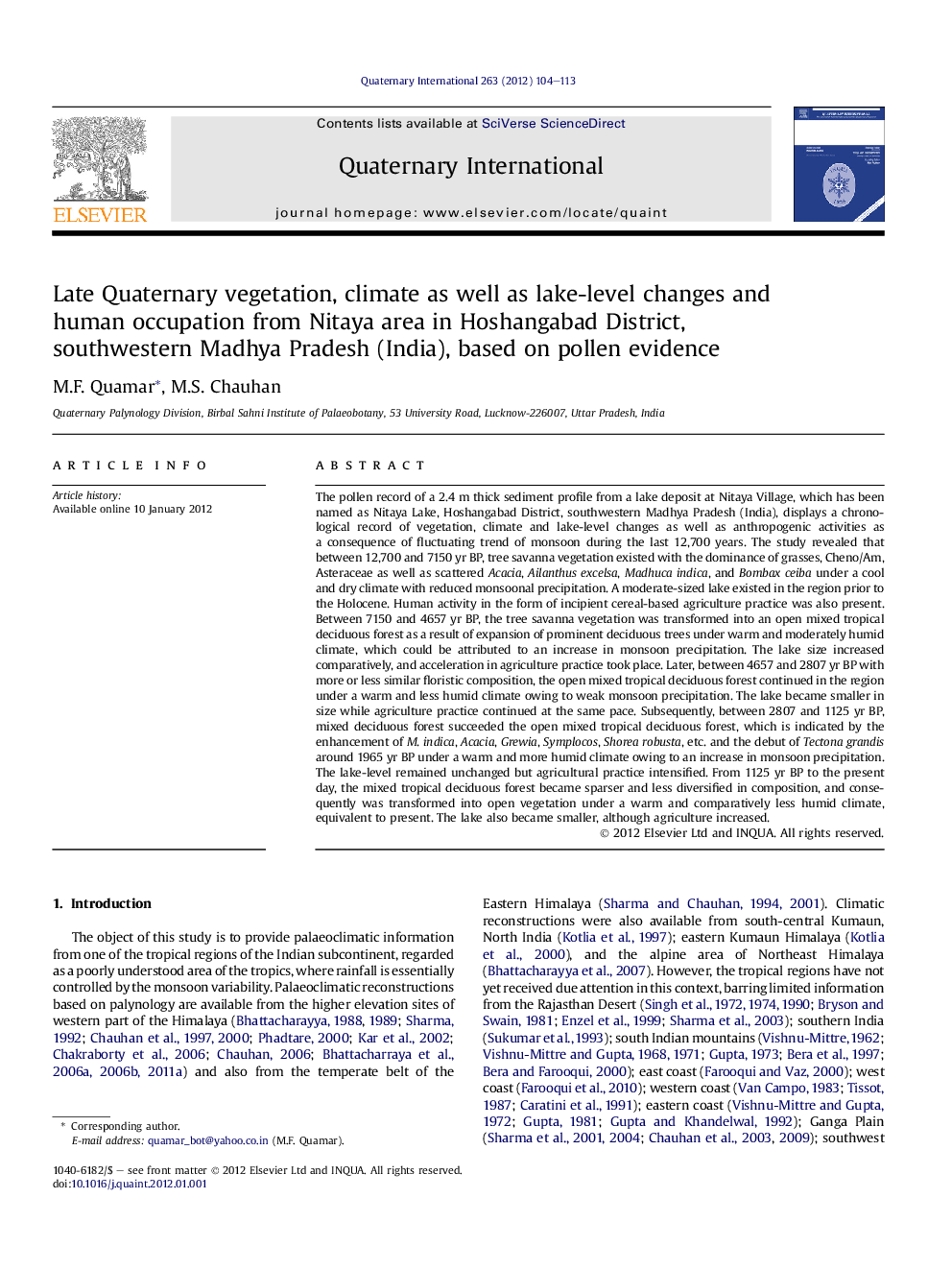| کد مقاله | کد نشریه | سال انتشار | مقاله انگلیسی | نسخه تمام متن |
|---|---|---|---|---|
| 1042868 | 1484222 | 2012 | 10 صفحه PDF | دانلود رایگان |

The pollen record of a 2.4 m thick sediment profile from a lake deposit at Nitaya Village, which has been named as Nitaya Lake, Hoshangabad District, southwestern Madhya Pradesh (India), displays a chronological record of vegetation, climate and lake-level changes as well as anthropogenic activities as a consequence of fluctuating trend of monsoon during the last 12,700 years. The study revealed that between 12,700 and 7150 yr BP, tree savanna vegetation existed with the dominance of grasses, Cheno/Am, Asteraceae as well as scattered Acacia, Ailanthus excelsa, Madhuca indica, and Bombax ceiba under a cool and dry climate with reduced monsoonal precipitation. A moderate-sized lake existed in the region prior to the Holocene. Human activity in the form of incipient cereal-based agriculture practice was also present. Between 7150 and 4657 yr BP, the tree savanna vegetation was transformed into an open mixed tropical deciduous forest as a result of expansion of prominent deciduous trees under warm and moderately humid climate, which could be attributed to an increase in monsoon precipitation. The lake size increased comparatively, and acceleration in agriculture practice took place. Later, between 4657 and 2807 yr BP with more or less similar floristic composition, the open mixed tropical deciduous forest continued in the region under a warm and less humid climate owing to weak monsoon precipitation. The lake became smaller in size while agriculture practice continued at the same pace. Subsequently, between 2807 and 1125 yr BP, mixed deciduous forest succeeded the open mixed tropical deciduous forest, which is indicated by the enhancement of M. indica, Acacia, Grewia, Symplocos, Shorea robusta, etc. and the debut of Tectona grandis around 1965 yr BP under a warm and more humid climate owing to an increase in monsoon precipitation. The lake-level remained unchanged but agricultural practice intensified. From 1125 yr BP to the present day, the mixed tropical deciduous forest became sparser and less diversified in composition, and consequently was transformed into open vegetation under a warm and comparatively less humid climate, equivalent to present. The lake also became smaller, although agriculture increased.
Journal: Quaternary International - Volume 263, 14 June 2012, Pages 104–113